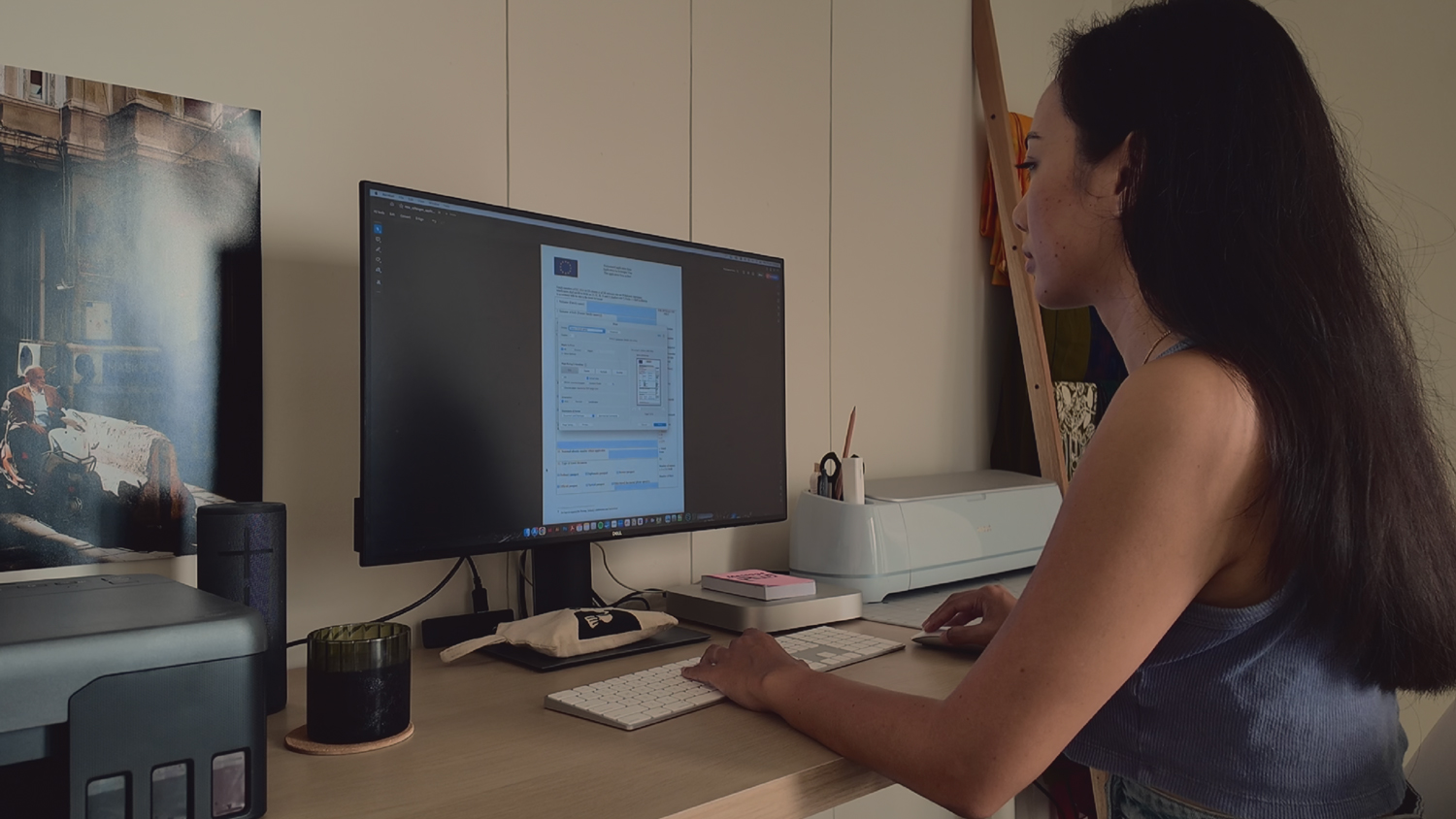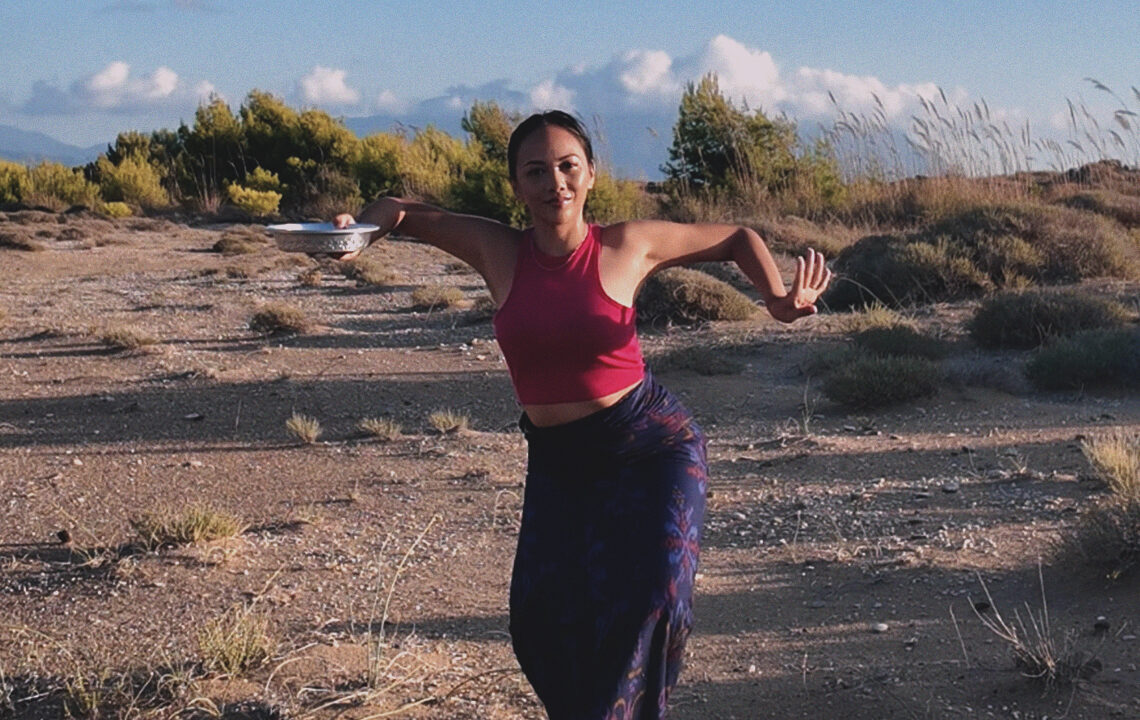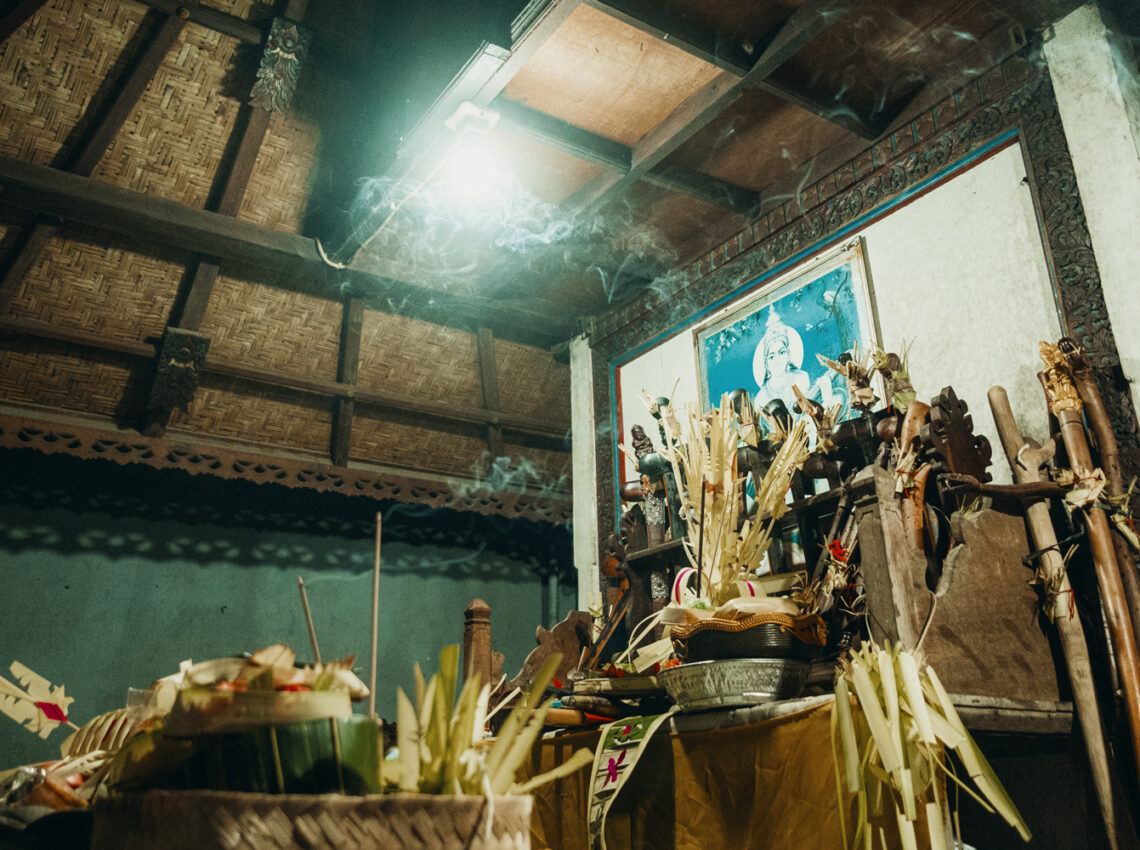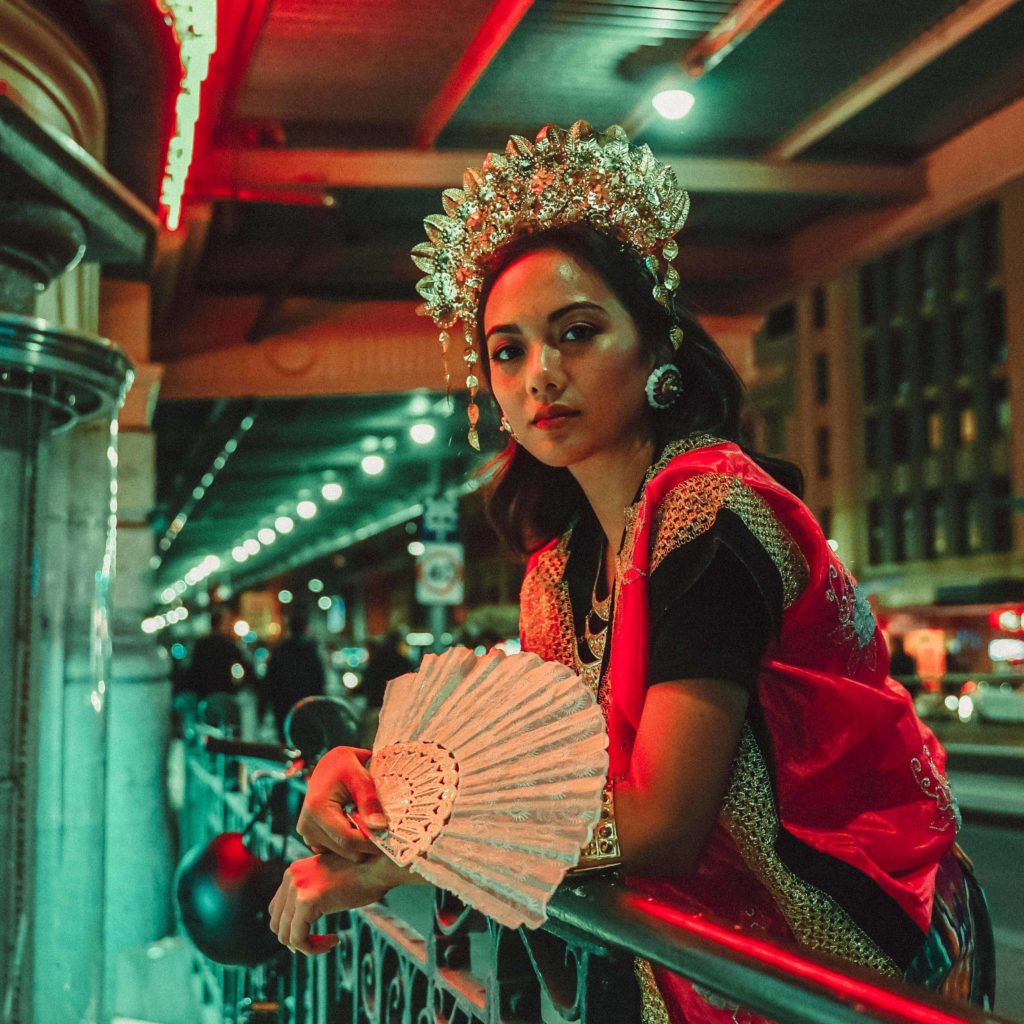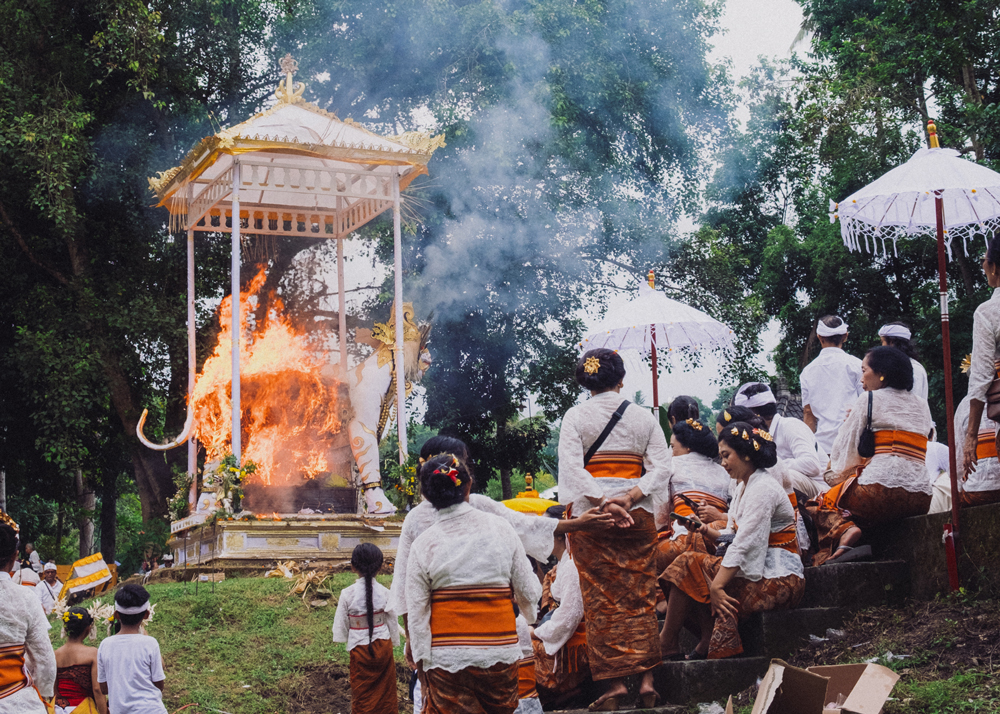
I had the honour of performing ngayah at a Pelebon ceremony in Karangasem, Bali. For me, it wasn’t just about the performance, it was an experience that tied me closer to my heritage and deepened my understanding of the Balinese culture I’ve been so eager to learn about.
What is Ngayah?
Ngayah is a unique concept deeply rooted in Balinese culture. It’s the act of offering one’s time, energy, and skills selflessly for the benefit of a religious, spiritual, or cultural cause. In the context of this performance, ngayah meant contributing to the Pelebon ceremony not for personal gain but purely as an offering to the community and as an act of devotion.
What stands out to me about ngayah is its selflessness. There’s no expectation of compensation or recognition. It’s about honouring the culture, the occasion, and the people involved. It’s a beautiful, humbling practice that reminds me of the importance of giving without asking for anything in return. I found this deeply meaningful, especially as I’ve spent much of my journey reconnecting with my cultural roots.
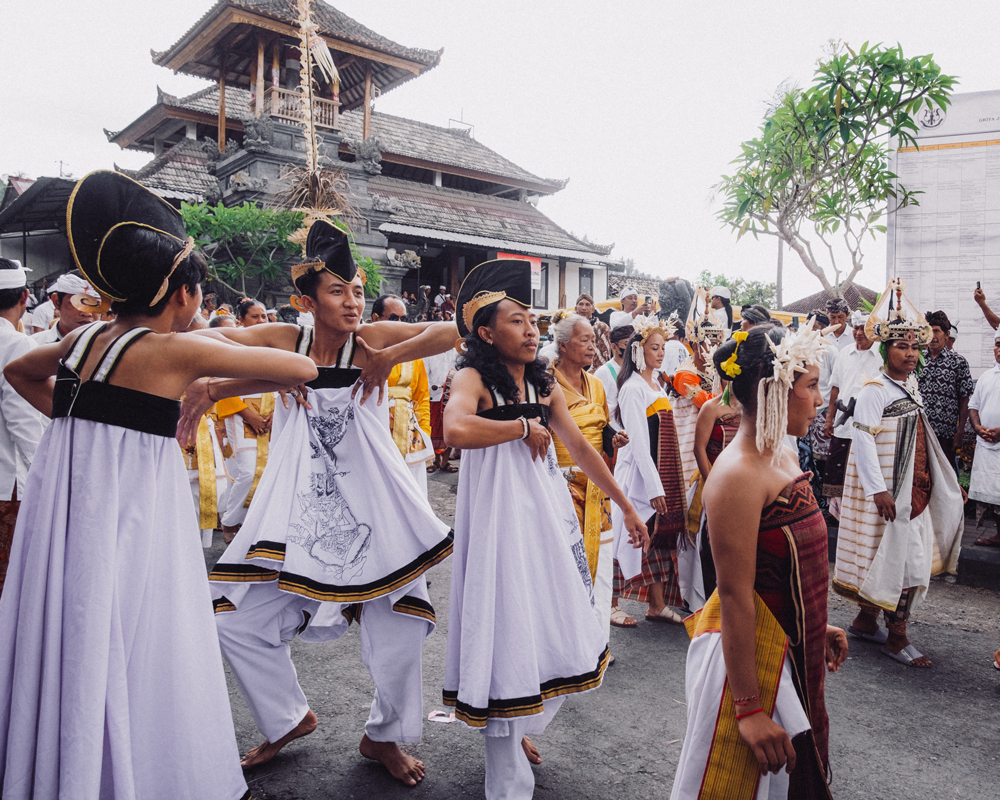
Pelebon vs Ngaben: Understanding the Difference
Both Pelebon and Ngaben are Balinese cremation ceremonies, but they differ in terms of scale, significance, and the people involved.
Ngaben is a public cremation ceremony that is held for ordinary people. It’s still a deeply spiritual and important ritual, but it’s more common and can be more communal in nature, often including the extended family and the village.
Pelebon, on the other hand, is reserved for the royal family or individuals of high social standing. This ceremony is much more elaborate, intricate, and sacred. The rituals take place over several days, and the involvement of the community is also more formalised. The sense of respect surrounding a Pelebon is immense. It’s not just a ritual, it’s a celebration of life and an honouring of the deceased on a royal scale.
Performing at a Pelebon in Karangasem was an entirely different experience from the Ngaben ceremonies I had read about. It was an opportunity to connect with something more spiritual, more intricate, and more sacred, which was humbling and eye-opening. It was a privilege to be part of such an important ceremony, and it felt like a true reflection of Bali’s deep-rooted cultural traditions.
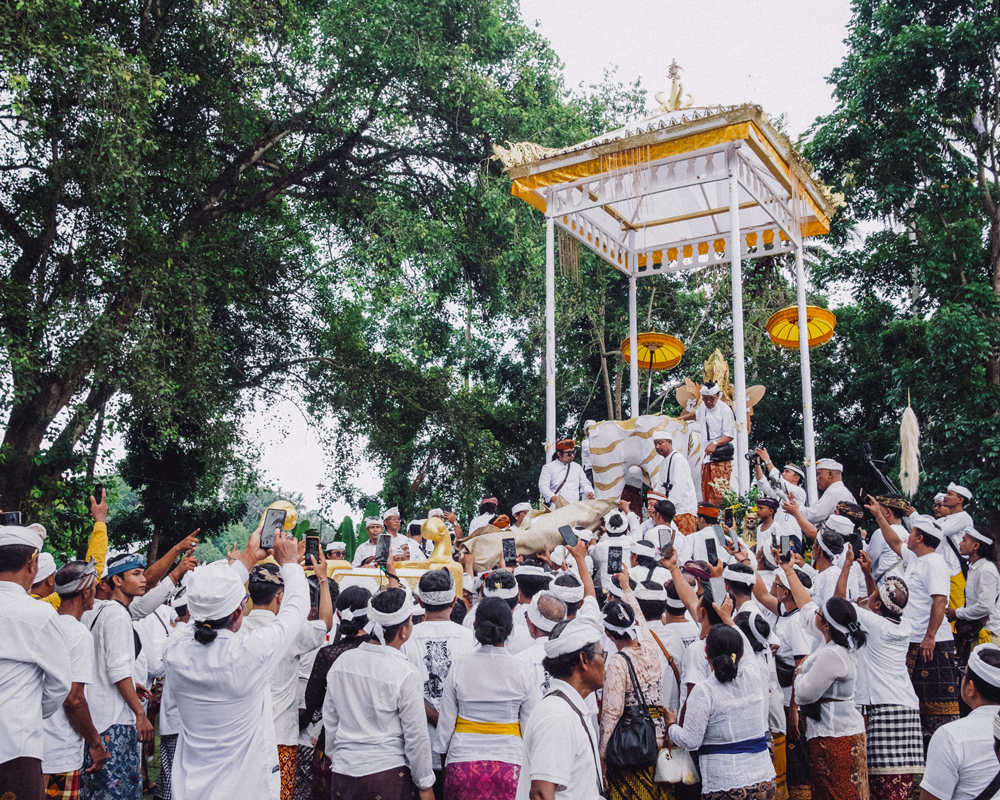
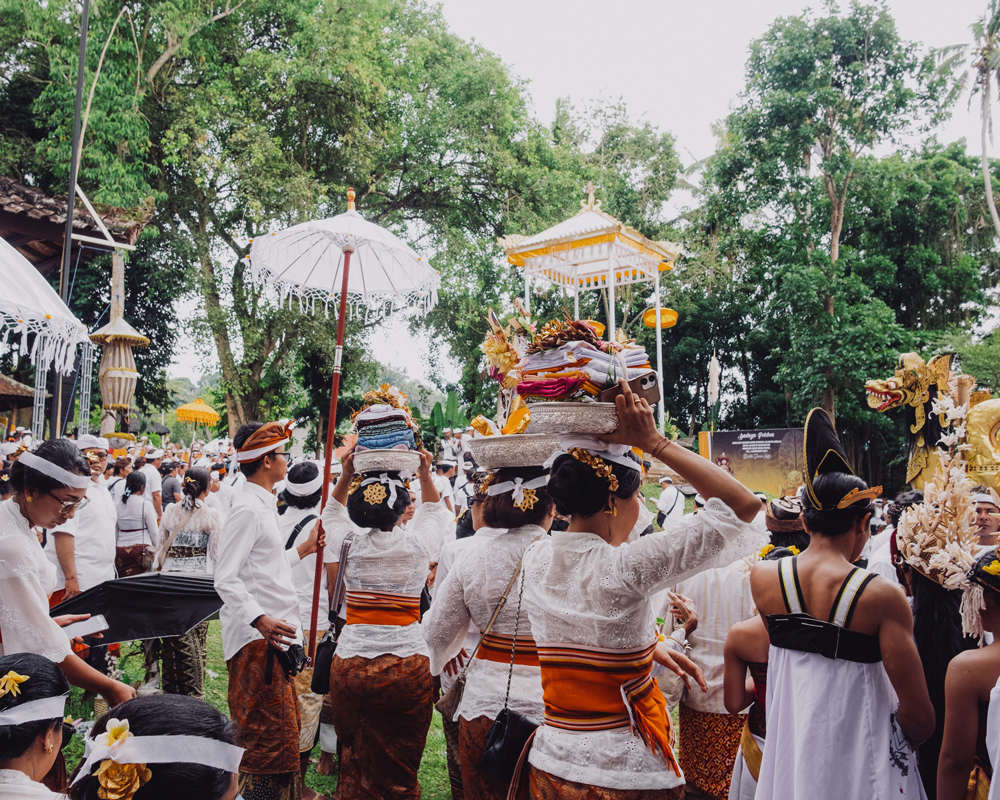
Honouring Ida Pedanda Gede Nyoman Jelantik Dwaja
This Pelebon was held for Ida Pedanda Gede Nyoman Jelantik Dwaja, a highly respected Balinese priest from Griya Jelantik Dauh Pasar in Budakeling, Karangasem, Bali. Before his ordination as a priest in 1998, he was celebrated as an artist in various traditional Balinese art forms, including wayang kulit (shadow puppetry), topeng (mask), drama, arja (a form of Balinese opera), and notably, gambuh, one of the oldest and most sacred forms of Balinese dance-drama. His contributions to the preservation and teaching of Gambuh have left a lasting legacy in Bali’s performing arts world.
As a spiritual leader, his passing marked a significant moment for the Balinese community, and his Pelebon was an elaborate and sacred event. Being part of the ceremony and honouring such a respected figure through dance was both humbling and meaningful.
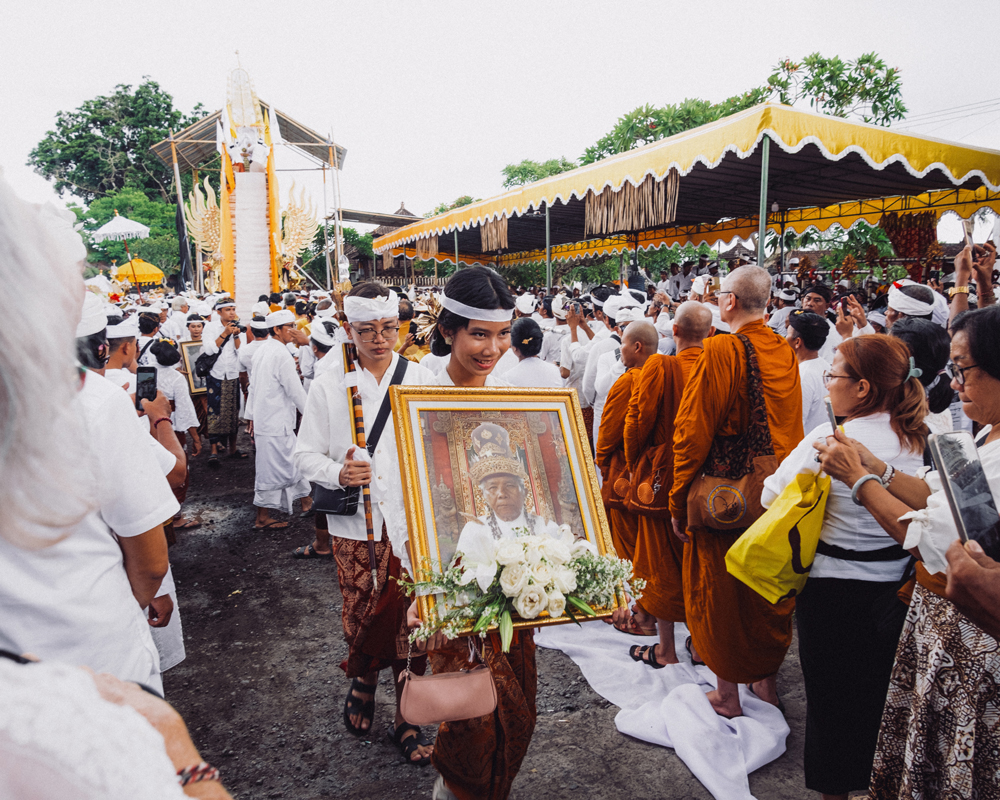
Performing in MaSutasoma: Gambuh Dance and Balinese Theatre
What made this experience even more unique was the performance itself. Alongside Bumi Bajera, I had the opportunity to perform a Balinese theatre performance called MaSutasoma, based on the Javanese story of Sutasoma. The tale of Sutasoma is one of the most famous stories of the Javanese Bodhisattvas and touches on the Buddhist concept of “Release.” It also includes the origin of Indonesia’s national motto: Bhinneka Tunggal Ika, Unity in Diversity.
The performance, held in Budakeling, the core village of the Brahmana Buda of Bali who have played a crucial role in preserving ancient Balinese-Buddhist traditions, rituals, and performing arts such as Gambuh, was created by Dayu Ani (Ida Ayu Wayan Arya Satyani) and explored traditional and modern tolerance, blending old and new elements of spirituality and culture, bringing the story of Sutasoma to life through Gambuh dance and traditional Balinese theatre.
This performance was deeply meaningful as it wasn’t just about bringing a story to the stage, it was about honouring a centuries-old tradition and exploring how culture adapts and evolves over time while still holding onto its core beliefs.
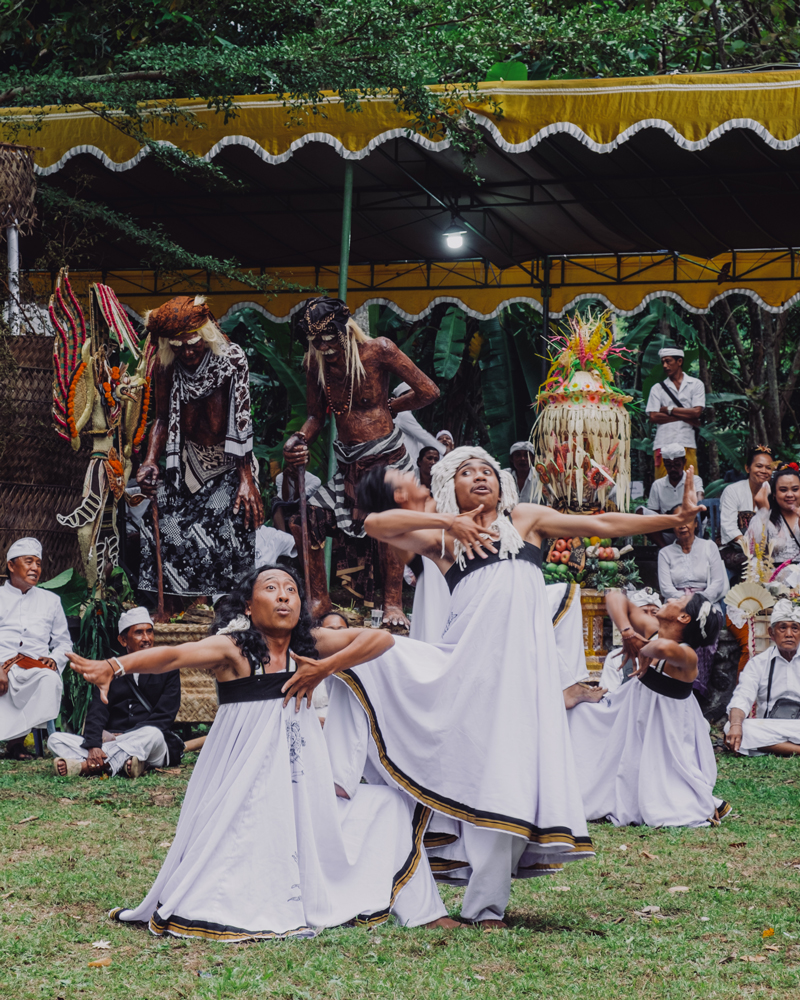
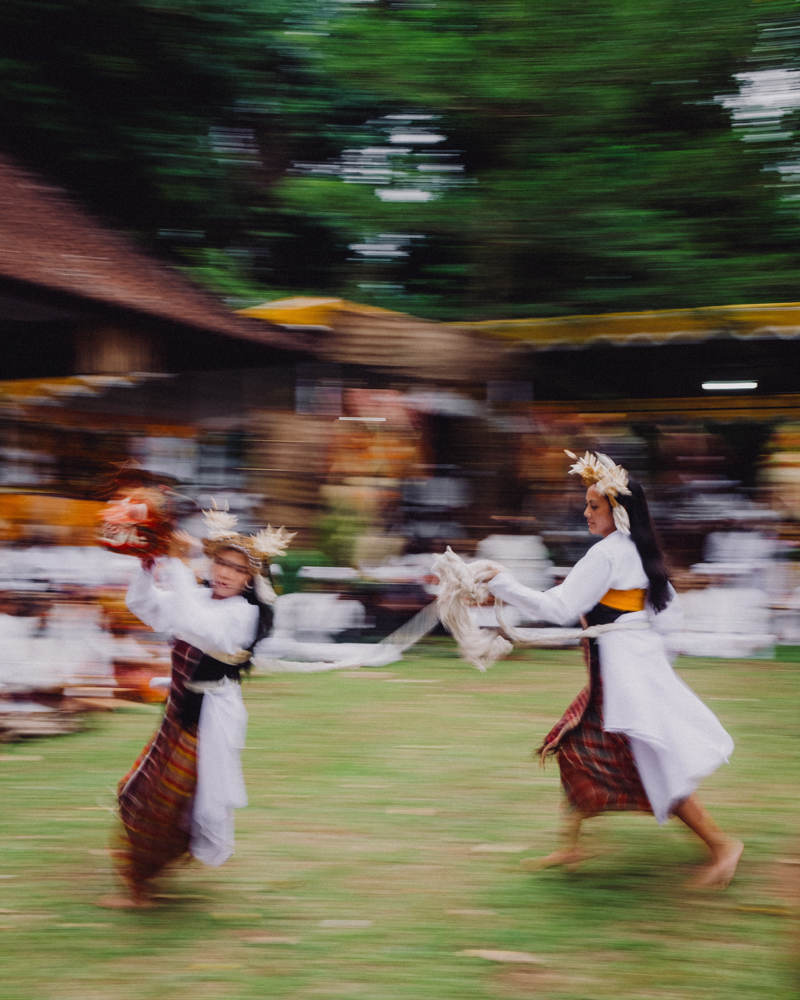
Performing with Bumi Bajera: No Rehearsals, Just Feeling
One of the most fascinating aspects of my performance with Bumi Bajera at the Pelebon was the approach we took to the performance itself. Unlike typical performances where there are months of rehearsals and meticulous planning, this performance relied on the feeling and energy of the moment. There were no rehearsals, just a guide to the story, allocated roles, and the opportunity to “be” in the performance.
I think this is a beautiful representation of Balinese performance culture. It’s not always about rigid choreography or getting everything perfect. It’s about embodying the spirit of the occasion, connecting to the energy of the ceremony, and allowing the movement to flow naturally. The beauty of this is that every performance is unique because it comes from the heart—it’s less about the steps and more about the feeling.
It felt completely different from anything I had experienced before. Instead of focusing on memorising steps or technique, I focused on staying present, letting the music guide me, and allowing the dance to take shape in the moment. Ngayah, in this case, was a way of offering myself to the ceremony—my time, my energy, and my expression, without thinking too much about the outcome. It was liberating.
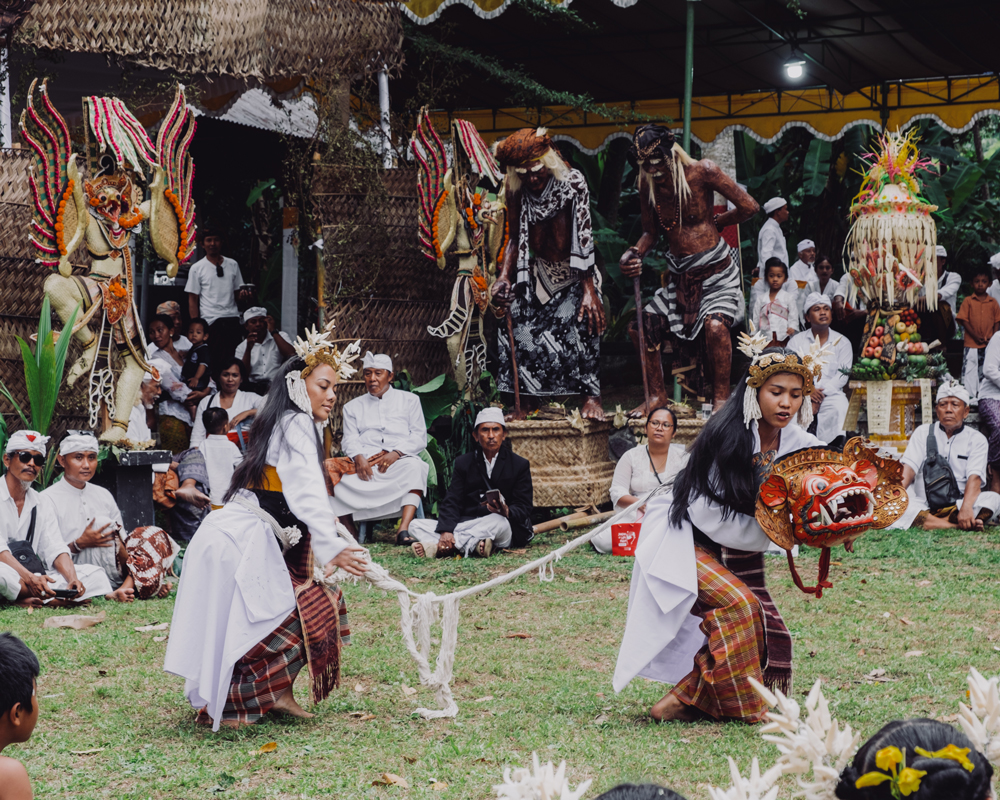
A Personal Reflection
This experience reminded me that culture, and our connection to it, is not just about learning the steps, the language, or the history—it’s about the deeper, spiritual connections we form through our practices. Ngayah is the giving of yourself without expecting anything in return. And that feeling, that selflessness, is something I deeply appreciate.
I’m incredibly grateful to Bumi Bajera for allowing me to be part of this experience. Working with them, performing without rehearsals, and connecting to the deeper aspects of Balinese culture has been a gift. The experience left me humbled, and reminded me once again that sometimes the most meaningful things come from just being present, letting go of expectations, and allowing ourselves to be part of something much bigger than ourselves.
If you’ve ever considered learning about your own culture or diving deeper into something meaningful, I encourage you to take that first step. There’s no right time….start now. It could be through dance, food, language, or simply being curious about your roots. Every small step counts, and every piece of culture you embrace helps keep your heritage alive.
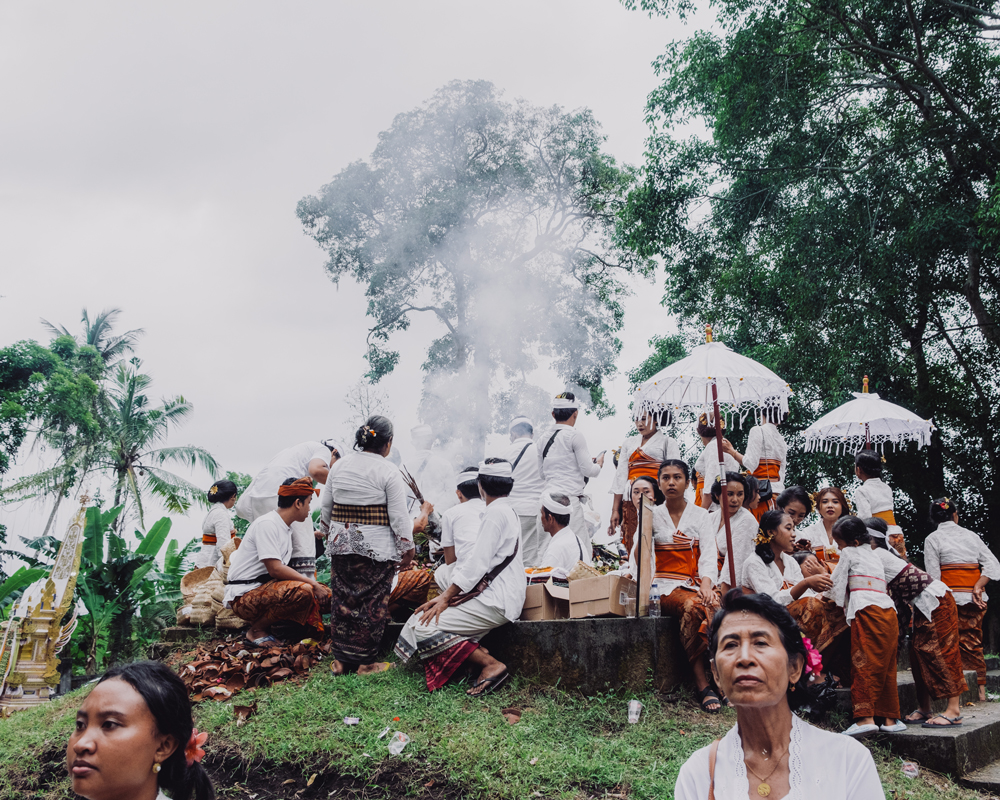

All photos by Photius Drakos

